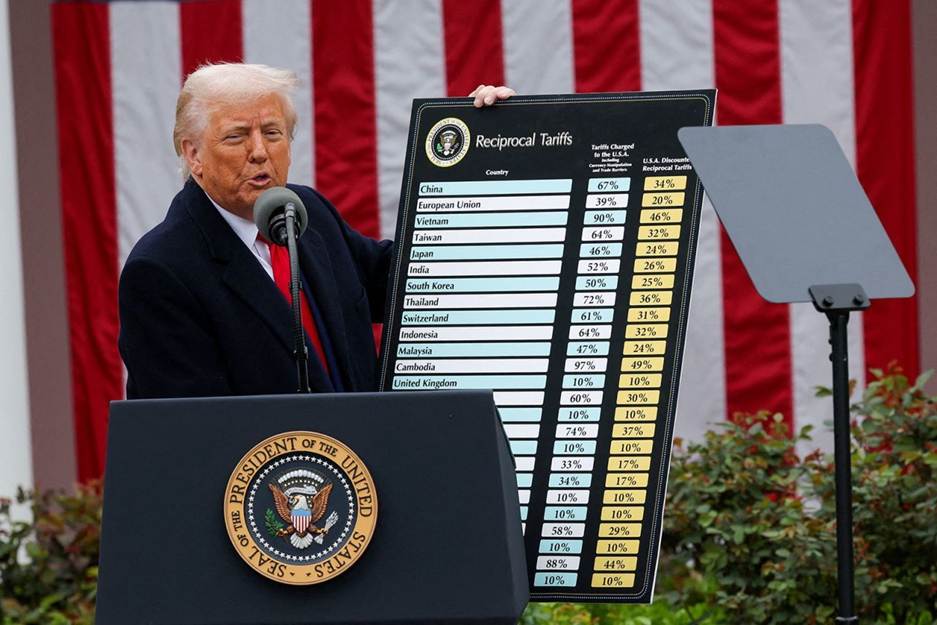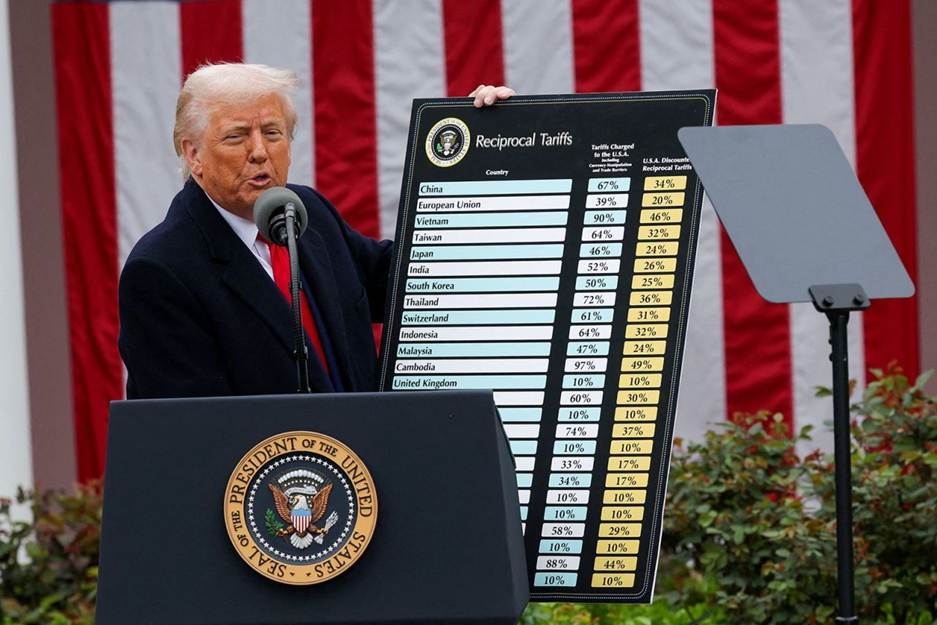
Tariffs will have ZERO long-term impact on the stock market.
There…I said it.
Don’t believe me? Basic math says I’m correct.
If you’re scared of tariffs, you won’t be after reading this

In a healthy economy, tariffs should have a long-term impact on the stock market.
But we don’t live in a healthy economy.
Regardless of what any politician does to the stock market…
The Federal Reserve can add digits on a computer screen, and your stocks will skyrocket.
And that’s exactly what they’ll be doing soon.
Not necessarily because they want to…because they have to.
Here’s the situation.
The U.S. is $36.6 trillion in debt.
$9.2 of that $36 trillion needs to either be refinanced or paid this year.
Let’s examine both options and see how all roads lead to higher stock prices.
Option 1:
The $9.2 trillion is paid off.
There are only a handful of ways to make this happen.
- Tax citizens to pay it off
- Cut government spending and reallocate funds
- Print money (Quantitative Easing)
Here’s why printing money is the only logical choice of the 3.
The government collected ~$5 trillion in taxes last year.
Which means we’re still $4 trillion short.
Plus, Trump is preaching zero income taxes.
So, raising taxes to collect $4 trillion more? Political suicide.
Paying off the $9.2 trillion with taxes is off the table.
Next, the government can cut spending elsewhere and reallocate funds.
Such as the military, federal programs, etc.
But that wouldn’t work either.
Military = $900B
Social Security = 1.4T
Medicaid and other health insurance programs = $1.6T
Even if I tally up all government expenditures, it still doesn’t pay off the debt.
And finally…the only possible choice.
The Federal Reserve will perform quantitative easing.
Which is a fancy way of saying they’ll print money out of thin air.
This money will be used to purchase bonds from the US Treasury.
This directly injects cash into the financial system.
If the Fed creates $9.2 trillion, it’s practically impossible for stocks not to rise.
Alright, so that’s what’ll happen if the Fed performs quantitative easing.
The other option is refinancing the debt at new interest rates.
Basically…kicking the can down the road.
The problem with refinancing at new rates is that interest rates are relatively high right now.
And the US is already paying ~$1.2T in yearly interest.
If we refinance $9.2T at current rates, that $1.2T in yearly interest would soar.
Not good.
So what’s the solution?
Cutting rates, of course.
Afterwards, the debt will be rolled over.
So the Fed’s options are the following:
Print $9.2 trillion (stocks would go parabolic)
Or cut rates, which means more lending will occur.
Lending with interest is how smaller banks effectively create money.
So no matter what happens, more money will be printed.
Which means your assets will rise.
There you have it.
Stocks will rise – regardless of Trump’s tariffs.
All roads lead to the money printer.
If you’re wondering when a genuine bear market could take place…
The most likely answer is 2026.
We live in a global economy with 4-year debt cycles.
The year of quantitative tightening and rate hikes worldwide is most likely 2026.
Until then, enjoy this monumental buying opportunity.
**
Hey there!
Welcome to the WOLF Financial Newsletter.
Join over 13,000 savvy investors building wealth and mastering advanced investing strategies live on Twitter Spaces. Subscribe below to be part of the action:
WOLF Financial has driven liquidity, user growth, and brand awareness across TradFi and Crypto through marketing, advisory, and partnership services. See more Here.
© 2025 Benzinga.com. Benzinga does not provide investment advice. All rights reserved.
